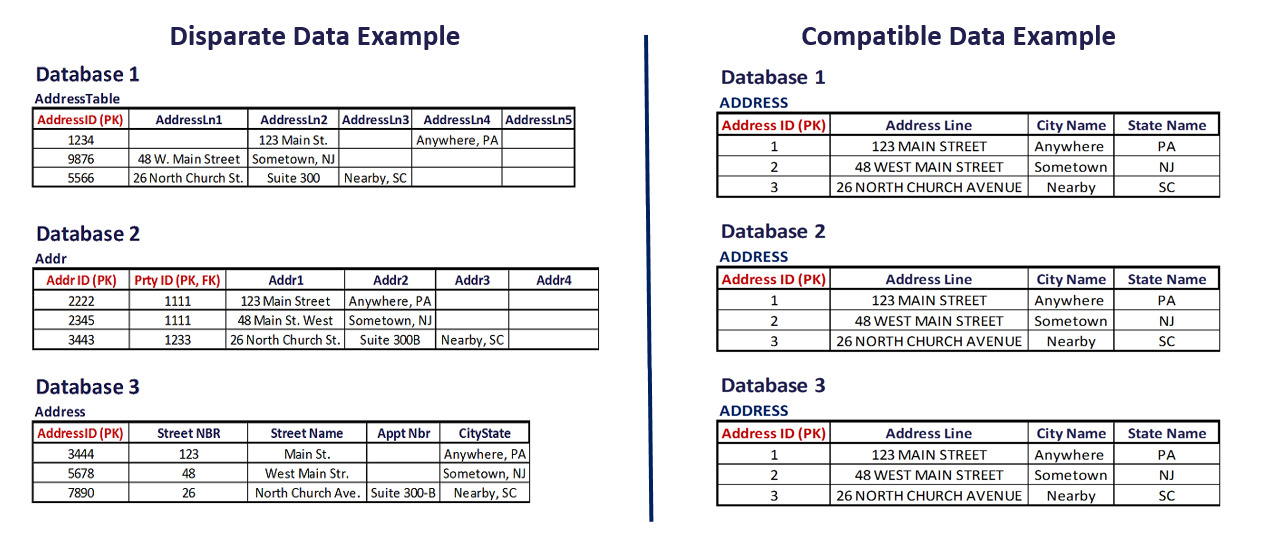Data Compatibility Defined
Data Compatibility is a set of very innovative enhancements to established data design and management methods. These enhanced methods focus on creating and maintaining Data Compatibility Standards, Universally Interoperable Datasets, and Modular Data Fabrics.
Utilizing superior data design methods, in the form of Compatible Data Modeling, along with Object-Oriented Data Management methods, Universally Interoperable Datasets are full-featured simply by design. These analytics- and AI/ML-ready, modular, plug-and-play datasets provide all the data functionality of conventional, disparate datasets without the ridiculous time, effort, and money required to make them more useful to the business. But beyond current data functionality, compatible datasets offer opportunities not even conceivable with disparate datasets.

Data Compatibility Defined
An Example of Compatible Data
Disparate Data vs. Compatible Data
Technically, what is compatible data? Compatible data is structural metadata and data content that is consistent across datasets. The following depiction compares a sample of disparate data to a sample of compatible data for the address master data domain. In each case, address data is shown from three different datasets, Database 1, Database 2, and Database 3.
In the disparate data example, the structural metadata is disparate across the three datasets as is the data content. In this disparate data example, the primary keys are especially a problem as addresses, that are apparently the same, have disparate primary key values.
In the compatible data example, the structural metadata is consistent across the three datasets as is the data content. In the compatible data example, the primary key values are constant across datasets. These primary keys are especially important as a simple way to join data records across datasets.

Without data transformations, preparations, or wrangling, a computer cannot calculate which disparate address data records represent the same addresses. In the Disparate Data Example, address data records that obviously represent the same address have primary key data values that are different. This is a data design flaw! In contrast, a computer can rapidly and reliably calculate which data records are related when the data is compatible. As such, compatible data is easy to join across datasets. Compatible datasets are data integrated and directly interoperable because of their direct dataset joins. Data compatibility is also the key to designing and implementing modular plug-and-play datasets.
Data Compatibility Features and Benefits (Click links for details):
 An enhanced data modeling methodology - Compatible Data Modeling
An enhanced data modeling methodology - Compatible Data Modeling
 A new approach to share data across data sources without data transformations – Direct Dataset Interoperability
A new approach to share data across data sources without data transformations – Direct Dataset Interoperability
 A standard interface for linking compatible datasets – Compatible Datasets
A standard interface for linking compatible datasets – Compatible Datasets
 An on-demand plug-and-play business intelligence environment – Compatible Business Intelligence and Analytics
An on-demand plug-and-play business intelligence environment – Compatible Business Intelligence and Analytics
 The Next-Generation Data Architecture – The Compatible Data Fabric
The Next-Generation Data Architecture – The Compatible Data Fabric
